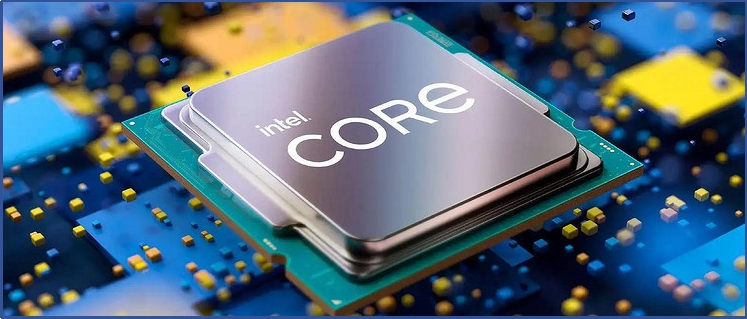Intel layoffs: Strategic Transformation and Market challenges
Silicon Valley chip giant Intel Corporation announced a major restructuring plan on August 1, 2024, which includes cutting more than 15,000 jobs, or 15% of the company's total workforce. The move is part of a difficult decision by Intel to respond to financial pressures and slowing market demand, and is part of its strategic transformation.

Details of the restructuring plan
Intel's restructuring plan includes not only layoffs, but also reducing capital spending and suspending dividends, among other measures. The company expects to cut $10 billion in costs through these initiatives by 2025. In a memo to employees, Intel CEO Pat Gelsinger said these are some of the most important changes in the company's history, and while it is painful news, these decisions are necessary for the company's long-term growth.
Intel earnings
1. Financial performance
Intel's revenue for the second quarter of 2024 was $12.83 billion, below market expectations and down 0.9% compared to the same period last year. Earnings per share (EPS) was 2 cents, well below the market expectation of 10 cents, a sharp decline of 84.62% year-on-year. Intel's shares plunged more than 20 percent in after-hours trading after the announcement, a sign of investors' deep disappointment with the company's results.
2. Performance of business units
In terms of specific business unit performance, data center and Artificial intelligence division revenue declined 3 percent, while client Computing Group revenue increased 9 percent year over year. The network and edge computing division saw a slight decline in revenue, while Intel's foundry business saw a 4 percent increase in revenue.
Technological innovation and market prospect
Facing the fierce market competition and technical challenges, Intel is seeking breakthroughs through technological innovation. The company expects to introduce Intel 18A process technology in 2025, which is not only a demonstration of technological progress, but also a key step in regaining Intel's leadership in process technology. Pat Gelsinger emphasized that through the new operating model, Intel will improve operational and capital efficiency, accelerate the IDM 2.0 transformation, and improve the company's profitability and market competitiveness.
Impact of the CPU unstable event
In the first half of the year, Intel also suffered from CPU instability, affecting its brand image and market confidence. With the release of popular console games, users have reported crashes and error issues with 13th and 14th-generation core processors under heavy loads. Although the company said it had taken steps to fix the problems, the incident negatively impacted Intel's reputation.
Conclusion
 Intel's strategic transformation is not only an important adjustment to the current market position, but also a thoughtful consideration of the future direction of development. Through job cuts, restructuring and technological innovation, Intel hopes to improve efficiency, reduce costs and stay ahead of the competition in the semiconductor market. However, this process is fraught with challenges, and Intel needs to achieve its strategic goals while ensuring technical stability and boosting market confidence.
Intel's strategic transformation is not only an important adjustment to the current market position, but also a thoughtful consideration of the future direction of development. Through job cuts, restructuring and technological innovation, Intel hopes to improve efficiency, reduce costs and stay ahead of the competition in the semiconductor market. However, this process is fraught with challenges, and Intel needs to achieve its strategic goals while ensuring technical stability and boosting market confidence.
Popular IC Components
● The OPA1688IDR is an operational amplifier from Texas Instruments. It operates at a supply from 4.5V to 36V (±2.25V to ±18V), with a low offset voltage of ±0.25mV, a low offset drift of ±0.5μV/°C, a typical gain bandwidth of 10MHz, and a typical value of 1.6mA per amplifier with low static current. The input range includes negative power supply and can work to positive power supply. Its application areas are mainly such as audio amplifier, high precision measuring instrument, sensor signal amplification, data acquisition and so on.
● The TPD4S214YFFR is a surge suppression IC manufactured by TI. It integrates a low RDS(On) N-channel current limiting switch to provide USB On-the-go (OTG) current to peripheral devices. The VBUS pin is capable of handling persistent voltages in the -7V to 30V range, and an overvoltage latching (OVLO) on the pin isolates the VBUS line and protects the internal circuit in the event of a fault. It can be applied to provide protection for devices with OTG capabilities, such as consumer electronics, industrial control devices, and medical devices with USB interfaces.
● DLW5BTN501SQ2L is a common mode filter produced by MuRata, which is particularly suitable for noise suppression applications. With a high current rating (up to 4A) and high common-mode impedance (500Ω at 100MHz), the compact, thin design allows for easy installation and layout in electronic devices. The operating temperature range is -40°C to 85°C, which can be adapted to the needs of a variety of working environments.
● The TPS62933DRLR is a synchronous buck converter chip that is widely used in power management systems for a variety of electronic devices, especially where efficient, low-noise power conversion is required. It can convert the higher input voltage to the lower and stable output voltage to meet the working requirements of the internal circuit of the device. Can help users achieve single-layer PCB layout, thereby saving manufacturing costs and space. Widely used in industry, personal electronic products and other fields.
Website: www.conevoelec.com
Email: info@conevoelec.com








